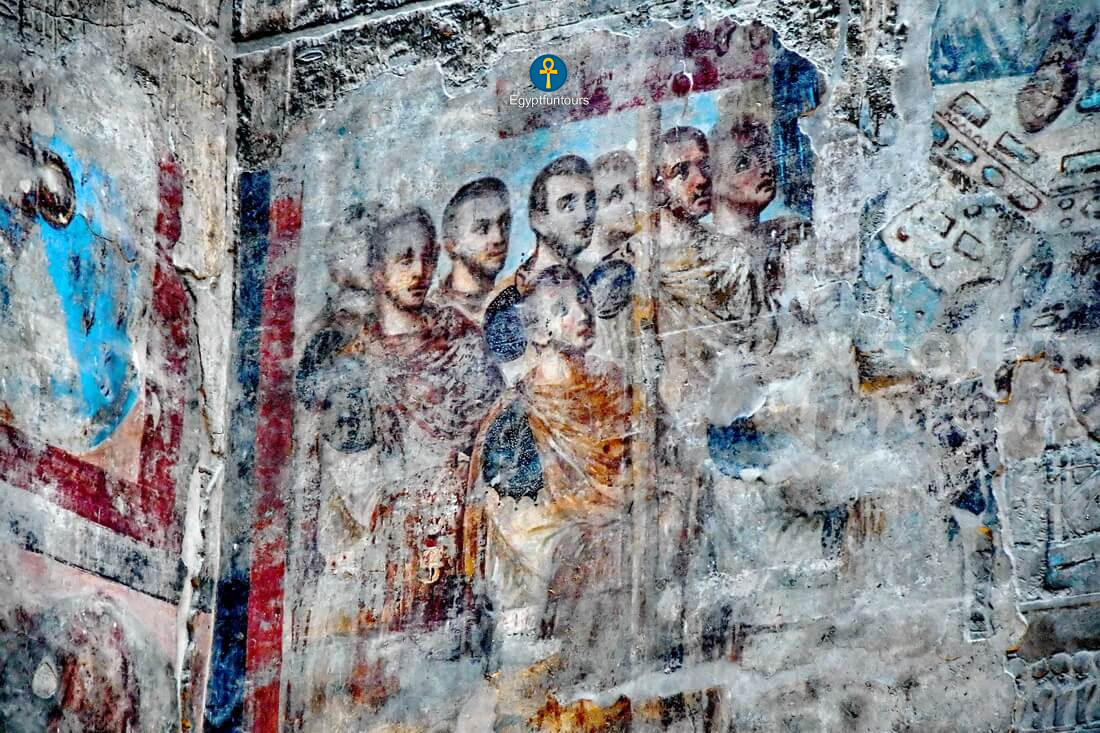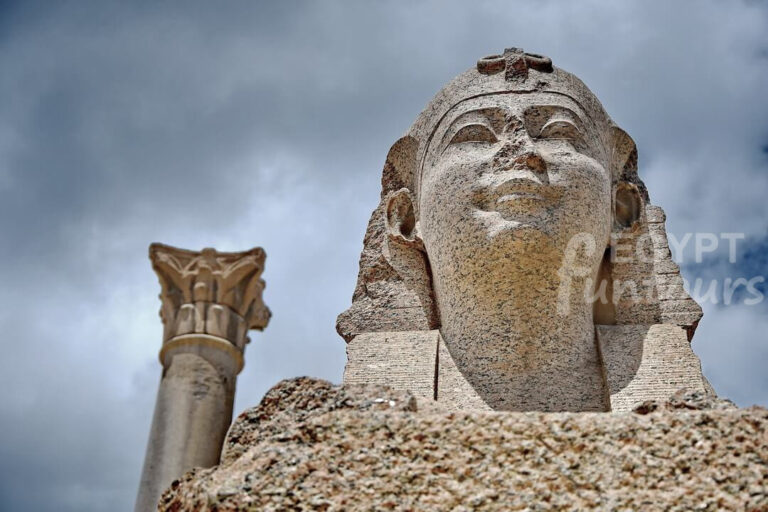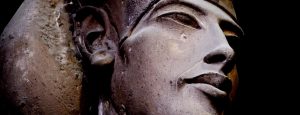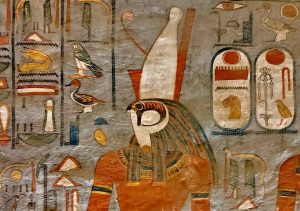Luxor Temple stands as one of the most beautiful temples in ancient Egypt. King Amenhotep III from Dynasty 18 initiated the construction of this magnificent temple. However, some archaeologists believe that the oldest part of the temple dates back to the time of King Mentuhotep, the founder of the Middle Kingdom.
History of Luxor Temple
Ancient kings seemed to follow a long-term construction plan. They aimed to complete the temple over centuries, not decades. King Amenhotep III built the sanctuary, the hypostyle hall, and the colonnade.

The smart plan presented two options. First, the builders could leave the temple as it was under Amenhotep III. It already looked finished, complete with an entrance leading directly to the colonnade. Alternatively, they could extend and enlarge the temple starting from that entrance.
Visitors can easily notice the difference in style between the various parts of the temple. For example, the columns built by Amenhotep III share a single design, featuring a cluster of plans that represent harvest.
Meanwhile, King Tutankhamun, from Dynasty 18, added another colonnade. He chose a style with open flower capitals to symbolize the irrigation season. Additionally, he included unique statues of himself depicted as Amen Ra with his wife. These statues are made of white alabaster stone and remain visible at the beginning of Tut’s colonnade.
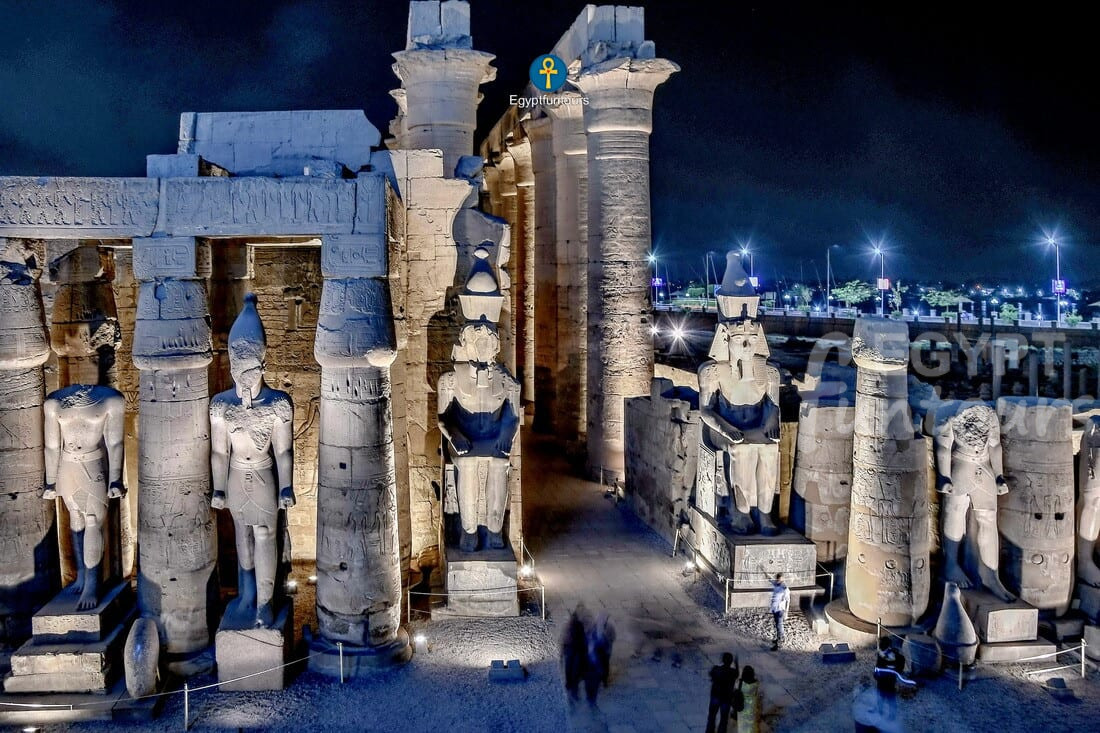
The largest part of the temple belongs to one king—King Ramses II. He added a massive colonnade, impressive statues, and grand pylons. Notably, the columns he built feature a single design with a bud capital, symbolizing the Nile’s flood season.
Furthermore, King Ramses completed the temple’s proposed plan. He constructed the bud-capital columns, the current exterior pylon, and large statues of himself in various poses: standing, walking, and sitting on the throne. As a result, the columns of the temple now represent the three seasons of ancient Egypt: flood, irrigation, and harvest.
Components and Description
The Pylons:
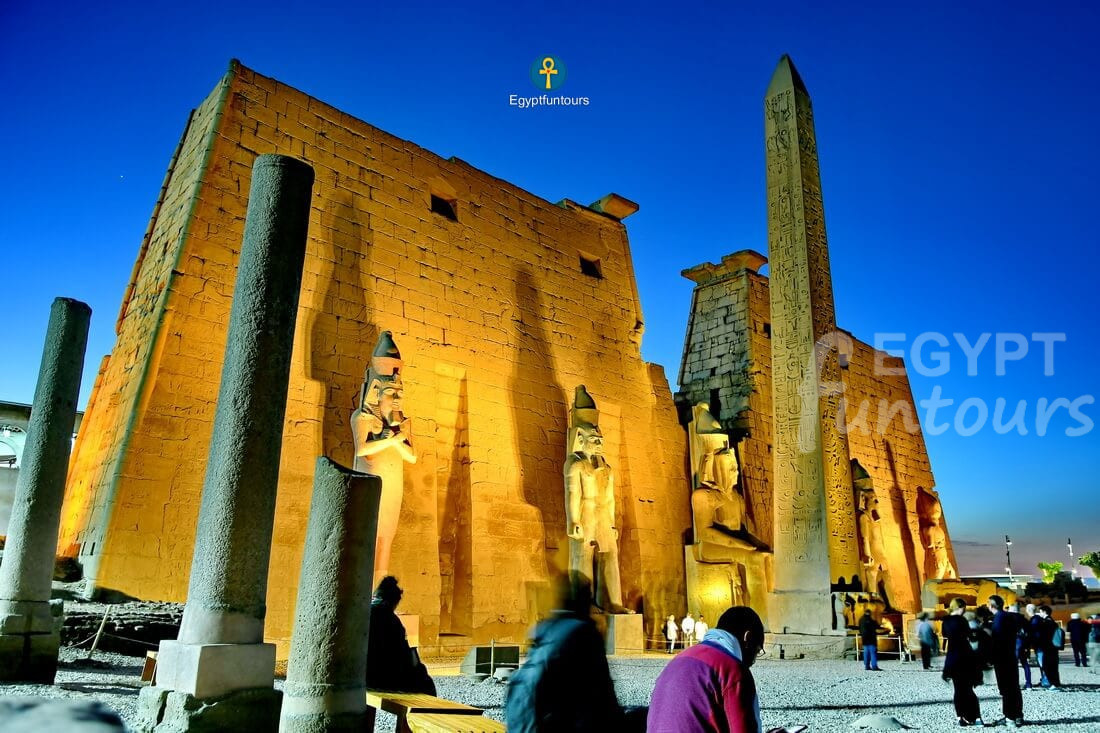
On the face of the great pylon, you can see carved scenes from the Battle of Kadesh. In this battle, Ramesses and his army defeated the Hittites and their allies. In front of the pylon, Ramesses erected a pair of red granite obelisks. One of these obelisks remains in Luxor, while its twin now stands in the Place de la Concorde in Paris. The pedestal features carvings of four sacred baboons, the first to greet the morning sun.
Each face of the obelisk displays three lines of vertical inscriptions. These inscriptions repeat the names and titles of Ramesses the Great: Horus, Mighty Bull, Exalter of Thebes, and Favorite of the Two Goddesses. They celebrate his achievements, including establishing monuments in Luxor for his father, Amen, who placed him on the throne. Other titles include Golden Horus, who sought excellent things for the one who fashioned him, and King of Upper and Lower Egypt, Usermare, Chosen of Re.
Interestingly, workers discovered Ramesses’ name inscribed on the bottom when they lowered the obelisk for transport to France. Pharaohs often usurped monuments from others, but Ramesses determined to keep this one for himself. The tall shaft’s pyramidal tip shone with sheet gold, reflecting sunlight and symbolizing the brilliance of the sun god Re. Colossal seated statues of Ramesses flank the gateway.
The Mosque of Abu’l Haggag
You will find the Mosque of Abu’l Haggag in the northeast corner of the Court of Ramesses at the Temple of Luxor. This mosque honors the Sufi sheik who spent the last fifty years of his ninety-year life in Luxor. Although Abu’l Haggag died in 1243, the mosque itself dates back to the 19th century.

The Court of Ramses II:
The south end of the Temple of Luxor was an addition constructed by Ramesses II during the XIX dynasty. The great court is surrounded by well-proportioned papyrus bud capital columns. Reliefs cover the interior walls. Within the court can be seen the tip of the minaret of the mosque of Abu’l Haggag.
The court of Amenhotep III:
Originally built by Amenhotep III, the court was later decorated by Tutankhamun and Horemheb. The Colonnade consists of 14 columns with papyrus capitals. In the entrance to the Colonnade are two statues bearing the name of Ramesses II but the feathers of Tutankhamun. What is left of the walls bear wonderful reliefs of Tutankhamun’s reign and a celebration of the re-establishment of the Amun orthodoxy.

The east and west sides of the court feature well-preserved double rows of papyrus columns with bud capitals. Interestingly, the columns originally stood on the north side as well. On the south side, the Hypostyle Hall boasts four rows of eight columns. Additionally, reliefs adorn both sides of the south wall, depicting the coronation of Amenhotep II by the gods. To the left of the central aisle, visitors can find a Roman altar dedicated to Constantine.
Moreover, the reliefs of Amenhotep III underwent whitewashing and painting in the 3rd or 4th century. As a result, the stucco is now crumbling and recently began to reveal the reliefs underneath. In the second antechamber, visitors see four columns compared to eight in the first chamber. This chamber also displays reliefs of Amenhotep II offering incense to Amun.
